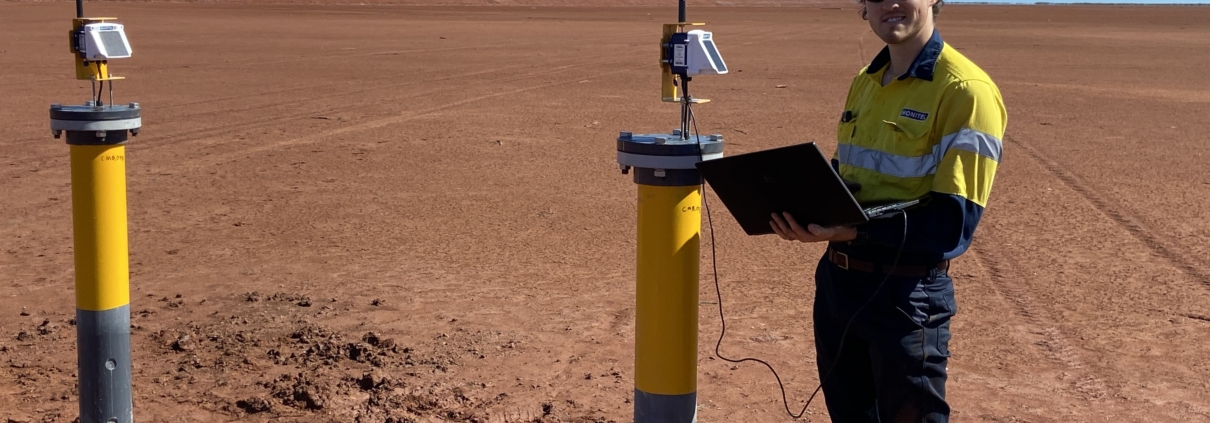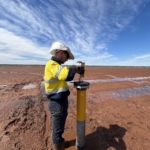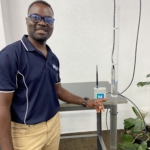What Type of Piezometer Should You Install in a Borehole?
The right piezometer will collect accurate and relevant data from a borehole, whilst a poorly suited sensor will leave you with holes in your findings. To make the most of your monitoring system, it is critical to select the right piezometer.
There various types available, each with their own features, installation methods and monitoring capabilities. When making a decision, you should consider these characteristics and the nature of your site.
This guide outlines the main types of piezometers we use and how to select the right one for your borehole monitoring needs. If you are unsure about what piezometer is suited to your site, please contact Monitel at admin@monitel.com.au or call (08) 6219 8284 for further assistance.
What Is a Piezometer?
A piezometer is an instrument used to measure the force of water held within the voids of soil or rock, known as pore water pressure. When installed in a borehole, a piezometer records water pressure at a specific depth, providing insight into groundwater behaviour, drainage and stability.
Piezometers can be used in a wide range of applications, including:
- Monitoring the effectiveness of dewatering
- Tracking groundwater changes in environmental assessments
- Supporting slope stability and dam safety assessments
- Meeting compliance obligations under WA regulations
At Monitel, we stock both manual and automated options, catering to different monitoring frequencies and data collection abilities.
Factors That Influence Your Choice
Several factors considerations should guide the selection of a piezometer for borehole use:
- Monitoring Duration: Is this a short-term site investigation or a long-term compliance program?
- Data Frequency: Will data be collected manually every few weeks or logged continuously in real time?
- Installation Environment: Is the ground soft, firm, saturated or contaminated?
- Depth and Accuracy Requirements: How deep is the borehole and how precise must the readings be?
- Regulatory Requirements: Are there DWER, DMIRS or project-specific standards that must be met?
Having carefully considered these criteria and following discussion with an environmental consultant, you will be able to choose from one of the piezometers below.
Piezometers Commonly Installed in Boreholes
Vibrating Wire Piezometers (VWPs)
VWPs are ideal for long-term monitoring where accuracy and durability are essential. Installed at the target depth and connected to a data logger, they deliver stable readings over long cable runs and harsh site conditions.
Best for: Automated borehole systems, tailings dams, deep foundations
Examples of VWPs we stock include the W16 Kompakt and the W9.
Standpipe Piezometers
A simple and cost-effective option, standpipes consist of a slotted pipe installed in a borehole, typically at depths between 5 and 30 metres. When using these sensors, water levels are measured manually with a dip meter.
Best for: Short- to medium-term monitoring where manual readings are acceptable
Our most popular standpipe piezometer is the W1.
Pressure Transducer Piezometers
These sensors provide a continuous electrical signal, making them suitable for real-time monitoring and remote integration. They’re often used in boreholes that require consistent reporting, such as those in environmental compliance projects.
Best for: Continuous groundwater level tracking and integration with telemetry systems
The SGP-3400 Series is the most commonly used pressure transducer piezometer in our range.
Drive-In Piezometers
Designed for soft ground, these are installed without a pre-drilled borehole, using rods or CPT rigs. While less common in traditional borehole setups, they’re useful in tailings and unconsolidated material.
Best for: Soft sites where drilling is not feasible
The Monitel team often use the WP-3400 & SGP-3500 Series drive-in piezometers . Some of our other piezometers have a drive-in capacity available on request.
Strain Gauge Piezometers
Strain gauge piezometers use electrical strain gauges to detect pressure changes and respond quickly to dynamic site conditions.
Best for: Boreholes where fast response is required and integration with digital systems is planned
Monitel stocks the SGP-3400 strain gauge piezometer.
High-Temperature VW Piezometers
Where elevated ground temperatures may affect standard sensors, high-temperature VWPs provide reliable performance and long-term data. This could be in buried infrastructure or heated zones.
Best for: Boreholes in thermally active or industrial environments
The VWPHT-3600 is a high-temperature VWP we have deployed across Western Australia.
Hydraulic Piezometer
These sensors transmit fluid pressure to a pressure gauge via water-filled tubing. This setup allows measurements to be taken at the surface while the element remains isolated at depth.
Best for: Low permeability soils (like clays), sites that experience significant electromagnetic interference.
See our hydraulic piezometer.
Choosing the Right Setup
For some projects, a single piezometer at a specific depth is more than enough.
Elsewhere, it may be better to install multiple sensors within the same borehole to get a more accurate understanding of vertical pressure gradients.
Our team of environmental consultants tailors each system to the particular project or site, taking into account:
- Borehole construction and casing
- Site hydrology and stratigraphy
- Project objectives and regulatory obligations
Enquire Today for Assistance with Borewell Piezometer Solutions
Selecting the right type of piezometer is key to collecting meaningful, actionable data from a borehole monitoring. Each sensor type offers distinct advantages and you may miss out on important insights should you make the wrong decision.
Monitel works closely with clients across WA to deliver tailored piezometer monitoring solutions that ensure accuracy, compliance and long-term value.
To discuss your borehole monitoring requirements or a possible monitoring solution, contact Monitel at admin@monitel.com.au or call (08) 6219 8284.




Leave a Reply
Want to join the discussion?Feel free to contribute!